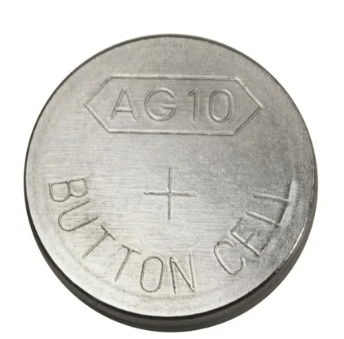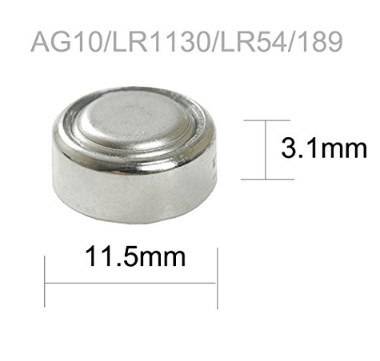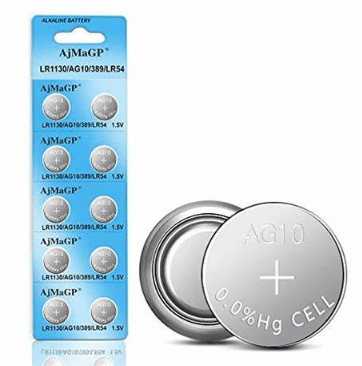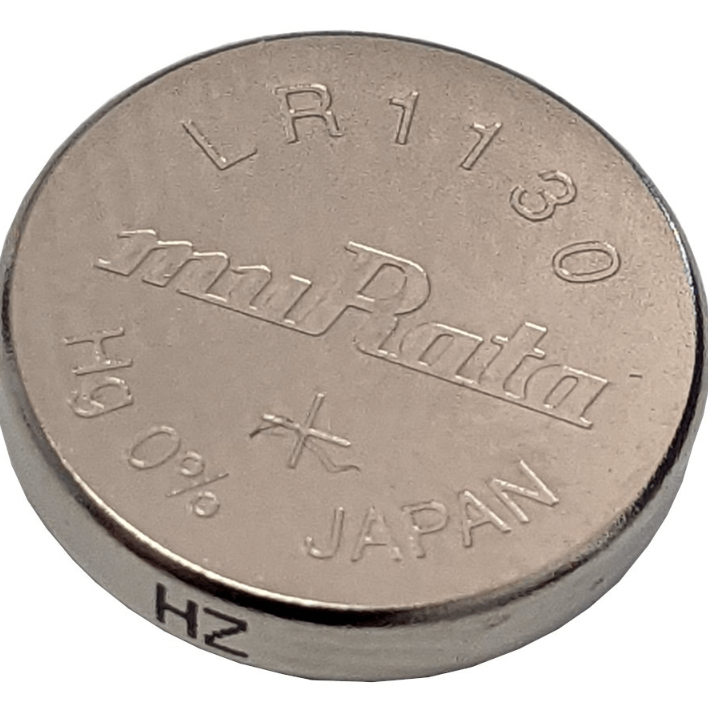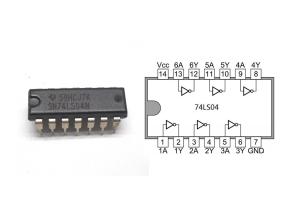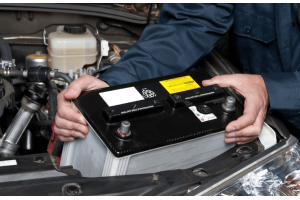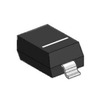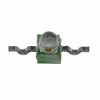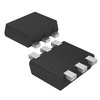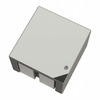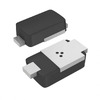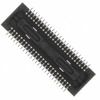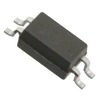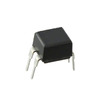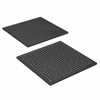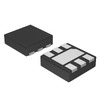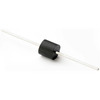on April 23th
552
AG10 Battery and Equivalent Battery Replacement
Given the widespread use of AG10 batteries in a variety of small and medium-sized devices, its role in modern electronics is both critical and subtle. Known for its standard 11.6 mm diameter and 3.1 mm thickness, this alkaline coin cell battery provides a reliable energy solution by utilizing zinc and manganese dioxide (MnO2). As a disposable, non-rechargeable option, the AG10 offers a nominal voltage of 1.5 volts and a capacity of approximately 50 mAh, making it an indispensable component in devices such as cameras, calculators, toys, and watches. The AG10's efficiency and reliability are greatly affected by environmental conditions, particularly temperature, which can significantly affect the battery's discharge efficiency and overall lifespan. When exploring replacement options and equivalents for the AG10, it became clear that its utility and compatibility extend beyond a single model. These batteries, which go by various names such as LR1130, LR54, and G10A, have similar chemistry and physical specifications, allowing for flexibility and interchangeability across devices. The process of selecting the correct replacement battery requires careful attention to the device's specifications to ensure that the new battery not only fits the device but also meets the device's performance requirements. This article serves as a guide to help users understand AG10 batteries and provide you with some suggestions for purchasing batteries.
Catalog
Figure 1: AG10 Battery
AG10 battery is a common alkaline button battery type. Its physical size is 11.6 mm in diameter and 3.1 mm in thickness. This battery uses zinc and manganese dioxide (MnO2) as the main chemical components to form its standard battery electrochemical system. AG10 batteries are disposable, meaning they are non-rechargeable and need to be replaced after a period of use rather than recharged.
Notably, its batteries are designed and constructed to provide efficient and reliable power solutions, especially for electronic devices that are small in size and require low energy consumption. For example, it plays an integral role in devices such as cameras, calculators, toys, and watches. The AG10's nominal voltage is typically 1.5 volts, and its maximum capacity is about 50 milliamp hours (mAh), which means it can deliver 50 milliamps for one hour at full charge.
Figure 2: Dimension of AG10
The working performance of the battery is greatly affected by environmental conditions, especially temperature. AG10 batteries perform best in an environment of approximately 21 degrees Celsius, as the standard temperature helps maintain a stable reaction of the chemicals inside the battery, thereby providing a stable current output. Temperatures that are too low or too high may affect its performance, including the battery's discharge efficiency and lifespan.
There are not many AG10 batteries in stock in the market, but given that some customers have special needs for battery performance, we here recommend silver oxide batteries with better performance as an alternative. Although silver oxide batteries cost more, they are generally better than standard alkaline batteries in terms of voltage stability and lifespan and are especially suitable for devices that require higher battery life and performance.
Overall, the AG10 battery is an ideal choice for many small electronic devices due to its cost-effectiveness, moderate size, and good environmental adaptability. However, for those devices that require long-term or higher performance, considering silver oxide batteries may be a better option.
|
Part:
|
AG10
|
|
Voltage:
|
1.5 Volt
|
|
Capacity:
|
50 mAh
|
|
Type:
|
Alkaline
|
|
Height:
|
3.05 mm
|
|
Weight
|
1gram
|
|
Resistance
|
15KΩ
|
|
Discharge
|
Continuous
|
|
Optimum Temperature
|
21 degrees Celsius
|
|
Analogues
|
LR54, LR1130, L1131, V389, D390, GP89A
|
|
Diameter:
|
11.6 mm
|
|
Shipping Weight:
|
0.01Lbs (0.16 oz)
|
|
Warranty:
|
60 Day Return
|
|
Composition
|
Zinc/ Manganese dioxide alkaline
chemistry
|
|
Appearance
|
Tablet disc-shaped button cell
|
Chart
1: AG10 Specifications
The AG10 battery is popular for its versatility and is known by several names in the market, including LR1130, LR54, 189, and G10A. Despite the different names and brands, these batteries share similar specifications and chemical compositions, which makes them interchangeable across a variety of devices. This feature provides convenience for users looking for replacements anywhere in the world.
Each of these battery models has a nominal voltage of 1.5 volts, but their capacities usually range from 85 to 90 milliamp-hours (mAh), which is higher than the standard 50mAh capacity of the AG10. This increase in capacity extends the lifespan of the batteries. For instance, the LR54 is slightly larger but offers similar voltage and capacity, making it a suitable replacement for devices that can accommodate a slightly larger battery.
The G10A battery also serves as a popular alternative. It matches the AG10 in terms of chemical makeup and voltage output, though there may be slight differences in size and capacity. The availability of such equivalent batteries ensures that users can find replacements even if the original battery type is out of stock or discontinued, thereby maintaining the functionality of their devices.
When choosing a replacement battery, you first need to consider the specific needs of your device, including the size of the battery case and the current required. Even though these batteries share the same voltage, slight differences in size and capacity can affect the performance of sensitive equipment. Therefore, it's recommended to review the manufacturer's specifications of your device to ensure that the replacement battery fits both physically and functionally. Overall, the broad availability and interchangeability of the AG10 and its equivalents offer flexible options for users, whether they need a direct replacement or a battery with a longer lifespan. This diversity reflects the standardization of battery technology across global markets, enabling consumers to easily find suitable replacements regardless of their location.
When the time comes to replace an AG10 battery, users should follow a detailed process to ensure they select the appropriate substitute, minimizing device downtime and maintaining optimal performance. Here’s how to meticulously determine the right replacement for an AG10 battery:
Firstly, users should consult the user manual or check any labels on the device that might specify the required battery model. This step is important as it provides the most direct information on what battery type the device originally used, ensuring compatibility with the replacement.
If you don't find anything you want in the manual or label, the next step is to physically remove the old battery from the device. Care should be taken during this step to avoid any damage to the battery compartment or device. Once removed, inspect the old battery for any markings or identifiers. These markings typically include the battery model, voltage, and capacity, which are essential details for selecting an equivalent replacement.
Next, for a broader understanding and more options, users can refer to online battery comparison charts. These resources are invaluable as they list battery specifications comprehensively, including dimensions, voltage, and capacity across different models. These charts facilitate the identification of interchangeable battery models that match the specifications of the AG10.
Once the appropriate replacement is identified, the final step is to purchase the new battery. This should be done by a reputable retailer to ensure the battery is genuine and reliable. It’s important to select a battery that not only fits the device in terms of size and voltage but also aligns with the user’s budget and performance expectations.
By following these steps—consulting the device’s documentation, examining the old battery, referencing comparison charts, and purchasing from trusted sources—users can effectively and confidently replace their AG10 battery, ensuring their devices continue to function smoothly without interruption.
Figure 3: AG10 Battery
The environmental impact of AG10 batteries, commonly used in a variety of electronic devices, is significant due to their disposable nature. These batteries, while indispensable for their intended applications, ultimately contribute to electronic waste, posing potential hazards from heavy metals like mercury, cadmium, and lead, which can leach into the environment if not properly managed. The responsible disposal and recycling of AG10 batteries are thus critical measures to mitigate these environmental risks. Many regions have established battery recycling programs that are designed to recover valuable materials from spent batteries. Such schemes enable the extraction and reuse of metals, thereby reducing the need for virgin resources and thereby minimizing the environmental footprint associated with the extraction and processing of raw materials.
There is a growing emphasis on transitioning to rechargeable battery technologies, such as nickel-metal hydride (NiMH) or lithium-ion (Li-ion) batteries. These alternatives not only offer the advantage of being rechargeable, significantly reducing the frequency of replacement and thus the volume of waste, but they also tend to have a lower environmental impact per charge cycle compared to disposable batteries. Encouraging the use of rechargeable batteries also aligns with broader sustainable development goals. It enhances the energy efficiency of devices and can lead to lower long-term operational costs for users. Moreover, rechargeable batteries, particularly those like lithium-ion, are becoming more efficient, affordable, and environmentally friendly due to advancements in battery technology and increased focus on sustainable practices within the industry.
To truly address the environmental concerns associated with AG10 and other similar batteries, both manufacturers and consumers must prioritize these sustainable practices. This includes investing in recycling infrastructure, developing and adopting more advanced rechargeable technologies, and educating consumers about the benefits and availability of these alternatives. By doing so, we can significantly reduce the ecological impact of battery use in electronics and move towards a more sustainable and less wasteful model of consumption.
Figure 4: LR1130 Battery
The LR1130 battery, commonly utilized in devices such as remote controls, car keys, and garage door openers, is produced under various brand names and labels, including LR1131, and SR1130, among others. This can sometimes lead to confusion for consumers when selecting the appropriate battery due to the multitude of similar yet slightly different markings. Delving deeper into the specifics, the LR1130 is a compact battery with dimensions of 11.6 mm in diameter and 3.1 mm in thickness, and it provides a nominal voltage of 1.5 volts. This makes it particularly suitable for a wide range of small devices where space is limited and a reliable power source is required for efficient operation.
However, despite its widespread use, users must understand that variations in branding and markings like LR1131 or SR1130 can indicate slight differences in battery composition and performance characteristics. For instance, while the "LR" prefix generally denotes an alkaline battery, an "SR" prefix might indicate the use of silver oxide technology, which although similar in size and voltage, offers different performance metrics such as a longer life or a more stable discharge curve under varied temperature conditions. Therefore, when replacing an LR1130 battery, users should pay close attention to these markings. It's important to match not only the physical size and voltage but also to consider the specific battery technology, as using the wrong type could potentially affect device performance or even damage the device.
When installing an LR1130 battery, the most important step is to correctly identify the orientation of the positive and negative terminals to ensure proper functionality and avoid potential damage to the device. The battery's flat side is generally the positive terminal, while the side featuring a small circular protrusion is the negative terminal.
To begin the installation, you should first verify these terminals against the corresponding markings inside the battery compartment of your device. These markings are typically indicated by "+" and "-" symbols near the respective slots or contacts. Ensuring that the battery aligns correctly with these symbols is vital, as reversing the polarity can lead to malfunctions or severe damage to the device's internal circuitry.
When placing the battery into the device, it's important to do so gently to avoid bending or damaging the sensitive metal contacts within the compartment. These contacts need to be noted because they transfer power from the battery to the device. Forcible insertion or incorrect alignment can bend these contacts, potentially resulting in poor connections and unreliable device performance.
Once the battery is in place, double-check that it sits flush against the contacts and that there is no loose movement. A securely fitted battery ensures optimal conductivity and helps maintain the efficiency and longevity of both the battery and the device.
By paying close attention to these details during installation, you not only protect your device from potential damage but also ensure that it operates at peak efficiency. This careful approach to installing the LR1130 battery maximizes device uptime and helps avoid the inconvenience and cost of premature battery replacement or device repair.
Selecting the ideal battery for your device requires close attention to size and compatibility. Examining the differences between the LR1130 and AG10 batteries reveals how their dimensions impact device compatibility and performance. Both batteries have the same diameter, which allows them to fit into many devices that require a standard "button battery" size. However, their thickness varies, influencing both where they can be used and how effectively they operate.
The LR1130 and AG10 are popular choices for small electronic devices such as watches and calculators. Known as "button batteries," they have a compact, round design perfect for fitting into various small gadgets. The main difference between them is their thickness, which plays an important role in device performance. The AG10 battery is particularly thin, measuring about 3.1 mm. This sleek design is advantageous for devices with very limited space, such as ultra-compact electronics. In contrast, the LR1130 is slightly thicker, which may benefit devices that require batteries with a higher capacity. This extra thickness typically translates to a longer battery life, allowing devices to run longer before needing a battery replacement.
Comparing the AG10 and LR1130 batteries side by side, if the two batteries were compared to coins, the AG10 would be as thick as two stacked U.S. pennies or Canadian dimes, while the LR1130 would be as thick as a U.S. quarter or three stacked the thickness of Canadian coins. This small difference can significantly affect how each cell is installed in the device and its efficiency.
When choosing between the LR1130 and AG10, be sure to consider the specific needs of your equipment first. For gadgets with limited space, the thinner AG10 is preferable. However, if your device requires more power for prolonged use, the thicker LR1130 offers the advantage of extended operation without replacement. Understanding the nuances of battery dimensions like the LR1130 and AG10 helps you make decisions that enhance your device's efficiency and longevity. Proper battery selection ensures your devices perform reliably and keep up with your lifestyle, whether for a compact calculator or a stylish wristwatch.
|
Battery
Datasheet
|
Capacity
|
Operating Temperature
|
Annual Self-Discharge Rate
|
Battery
Datasheet
|
|
Duracell D389/D390
|
80 mAh, 15 kΩ down to 1.2V @20°C
|
0°C to +60°C
|
<10% @20°C
|
104μA over 15kΩ @20°C
|
|
Energizer 189
|
80 mAh, 15 kΩ down to 0.9V @21°C
|
-
|
-
|
83μA over 15kΩ @1.25V @20°C
|
|
Energizer E390/389
|
88 mAh, 15 kΩ down to 1.2V @21°C
|
-
|
~2% @20°C
|
99μA over 15kΩ @20°C
|
|
Eurobatt AG10 LR1130
|
70 mAh, 1 kΩ down to 0.9V @20±2°C
|
-
|
-
|
1.5mA over 1kΩ @20±2°C, starting current
|
|
Kodak AG10
|
75 mAh, 15 kΩ down to 0.9V
|
-10°C to +45°C
|
-
|
-
|
|
muRata LR1130
|
70 mAh
|
-10°C to +60°C
|
-
|
-
|
|
Power-Xtra AG10/LR1130
|
80 mAh, 15 kΩ down to 0.9V @21°C
|
-
|
-
|
-
|
|
Renata 389 SR1130W
|
80 mAh, 15 kΩ down to 1.2V @20°C
|
-10°C to +60°C
|
<10% @20°C
|
104μA over 15kΩ @20°C
|
|
Renata 390 SR1130SW
|
80 mAh, 15 kΩ down to 0.9V @20°C
|
-10°C to +60°C
|
<5% @20°C
|
104μA over 15kΩ @20°C
|
Chart
2: LR1130, AG10, 389, 390 Batteries Comparison Chart
The AG10 battery exemplifies the delicate balance between providing dependable power and navigating the challenges posed by environmental concerns. Its role in powering numerous small devices crucial to daily life highlights its importance in the consumer electronics market. The transition towards more sustainable practices and the adoption of rechargeable battery technologies is not just beneficial but necessary to reduce the ecological footprint of battery consumption. By understanding the specifications, alternatives, and proper replacement procedures for batteries like the AG10, consumers can make informed decisions that optimize device performance while aligning with broader environmental goals. This comprehensive approach ensures that our electronic devices continue to serve us effectively without compromising our planet’s health.
Frequently Asked Questions [FAQ]
1. Is AG10 the same as LR1130?
Yes, the AG10 battery is the same as the LR1130.
2. Are AG10 batteries rechargeable?
No, AG10 batteries are not rechargeable. They are alkaline batteries designed for single use.
3. What is the current of the AG10 battery?
The current capacity of an AG10 battery, which refers to the amount of electric charge it can deliver at the rated voltage, is typically around 50 milliamp hours (mAh).
4. Can AG10 batteries be recycled?
Yes, AG10 batteries can be recycled. Many regions and countries have battery recycling programs that specifically handle small batteries like the AG10.
5. What battery replaces AG10?
The AG10 battery can be replaced by any equivalent battery that matches its specifications. Common equivalents include LR54, 189, and G10A, which are also alkaline button batteries with similar voltage and dimensions.
Share:
